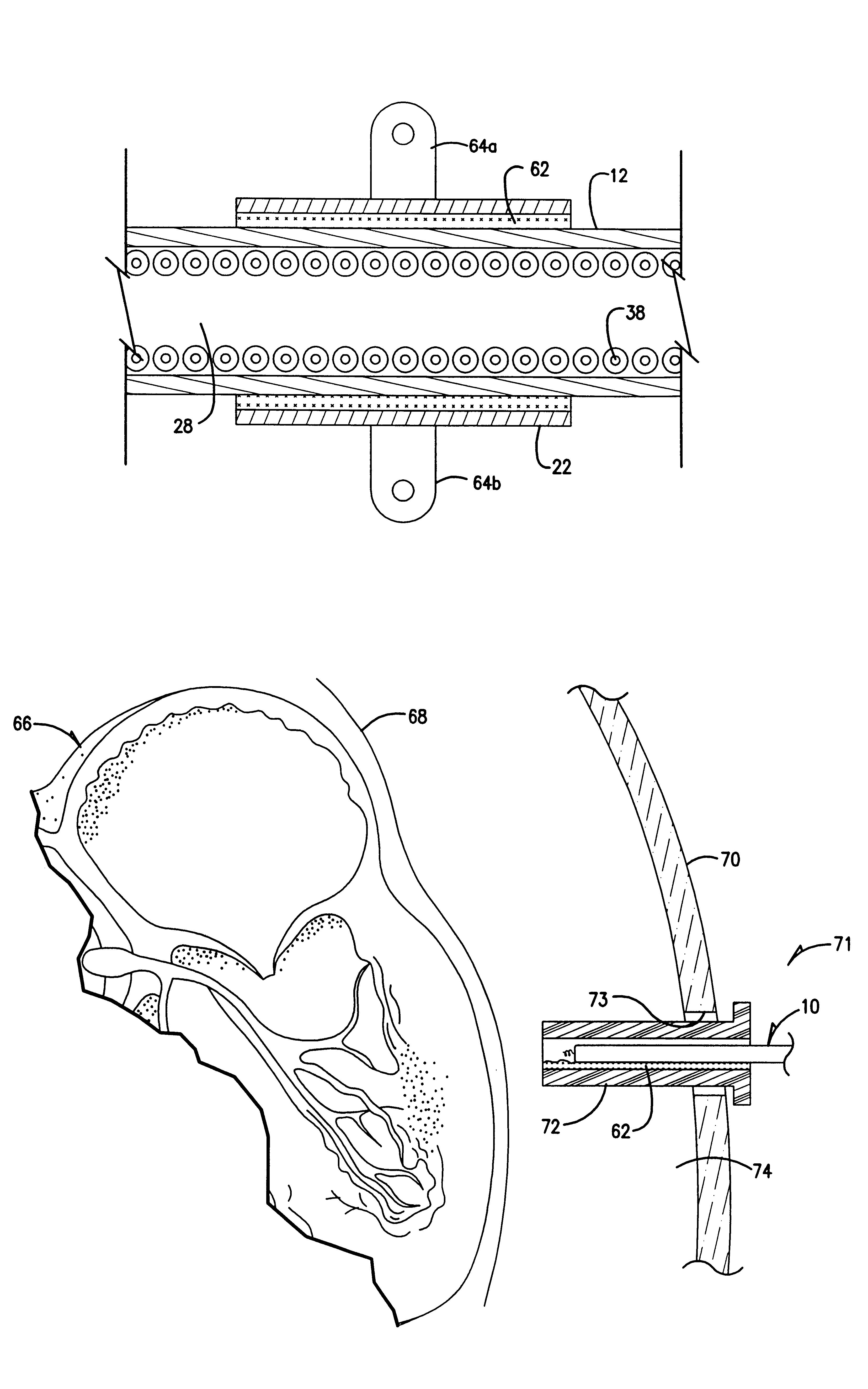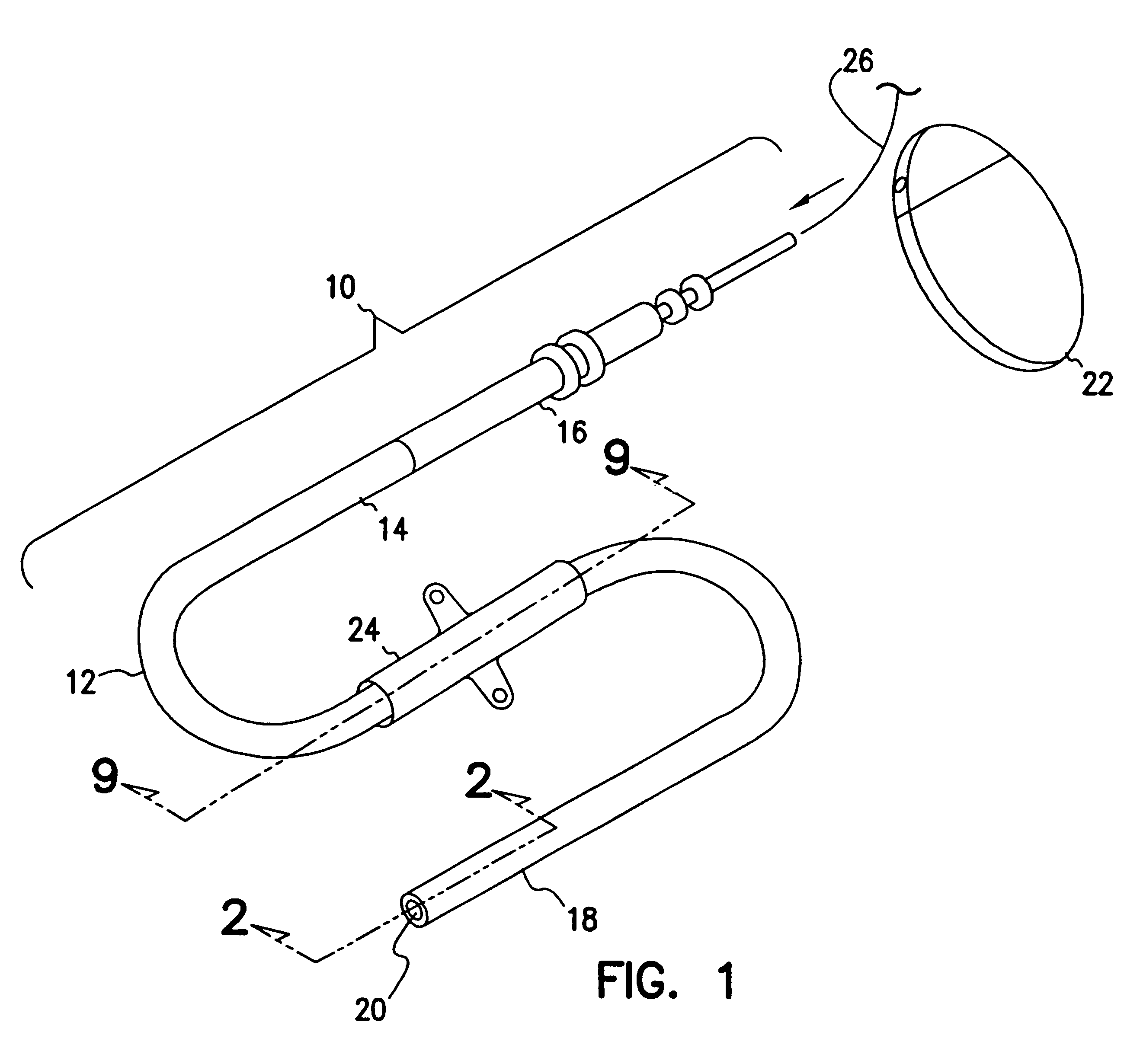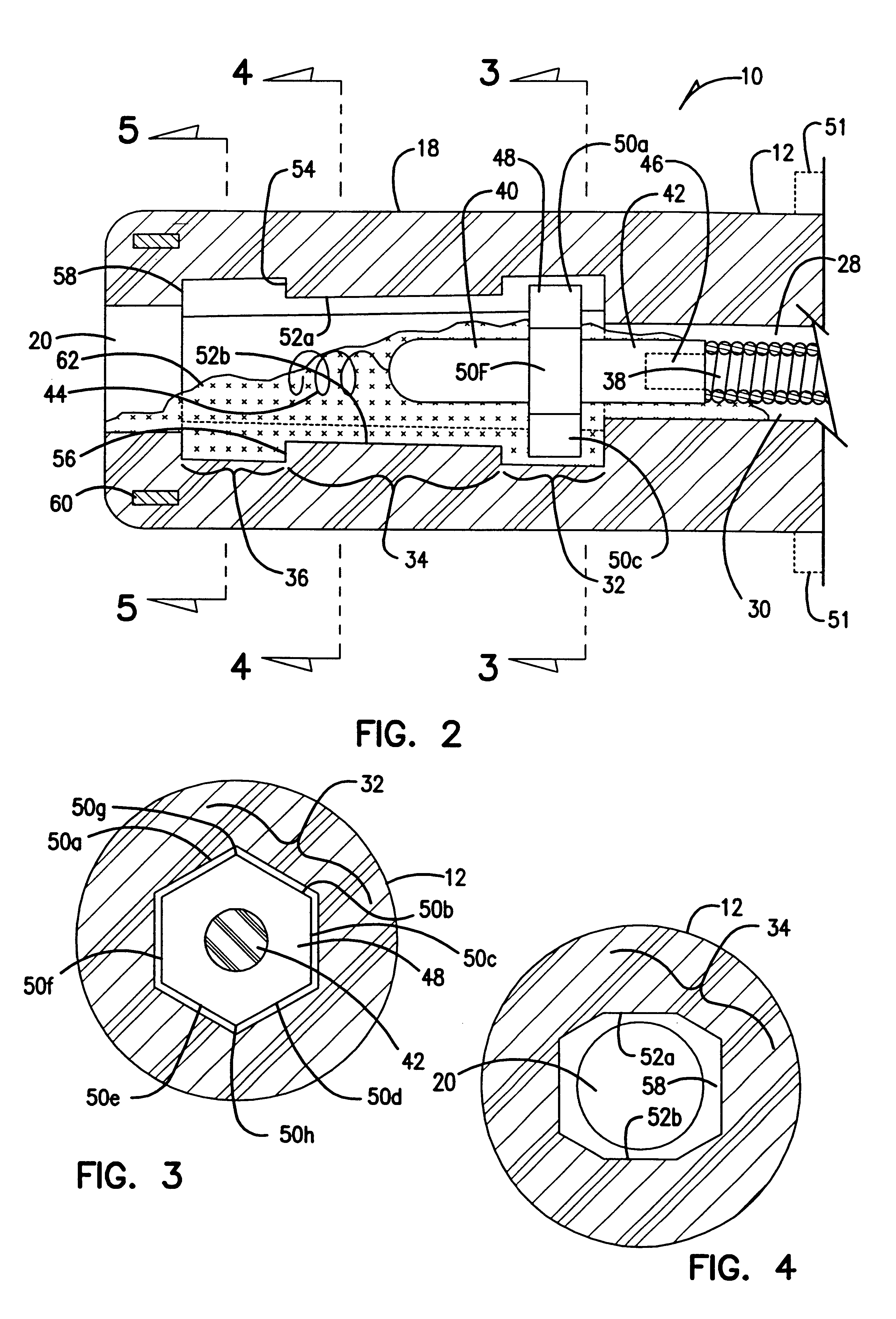Cardiac lead with active fixation and biocompatible lubricant
a technology of active fixation and lubricant, which is applied in the field of cardiac stimulator leads, can solve the problems of affecting the function of many types of conventional, affecting the function of transvascular endocardial electrodes, and presenting the risk of damaging the small, delicate structures of the sleeve and corkscrew members
- Summary
- Abstract
- Description
- Claims
- Application Information
AI Technical Summary
Benefits of technology
Problems solved by technology
Method used
Image
Examples
Embodiment Construction
In the drawings described below, reference numerals are generally repeated where identical elements appear in more than one figure. Turning now to the drawings, and in particular to FIG. 1, there is shown an exemplary cardiac stimulator lead 10 that includes a flexible insulating sleeve 12 that has a proximal end 14 coupled to a connector 16, and a distal end 18 terminating in a circular opening 20. The connector 16 is designed to be inserted into a cardiac stimulator 22, and is shown highly exaggerated in size relative to the cardiac stimulator 22. The cardiac stimulator 22 may be a pacemaker, a cardioverter / defibrillator, or other type of stimulator or a sensing instrument. A suture sleeve 24 is slipped over the sleeve 12. During implantation, the suture sleeve 24 is sewn to body tissue at the site of transvenous entry. The connector 16 is hollow to enable a flexible stylet 26 to be inserted therein as indicated by the arrow. The stylet 26 is used to spatially manipulate the lead ...
PUM
 Login to View More
Login to View More Abstract
Description
Claims
Application Information
 Login to View More
Login to View More - R&D
- Intellectual Property
- Life Sciences
- Materials
- Tech Scout
- Unparalleled Data Quality
- Higher Quality Content
- 60% Fewer Hallucinations
Browse by: Latest US Patents, China's latest patents, Technical Efficacy Thesaurus, Application Domain, Technology Topic, Popular Technical Reports.
© 2025 PatSnap. All rights reserved.Legal|Privacy policy|Modern Slavery Act Transparency Statement|Sitemap|About US| Contact US: help@patsnap.com



